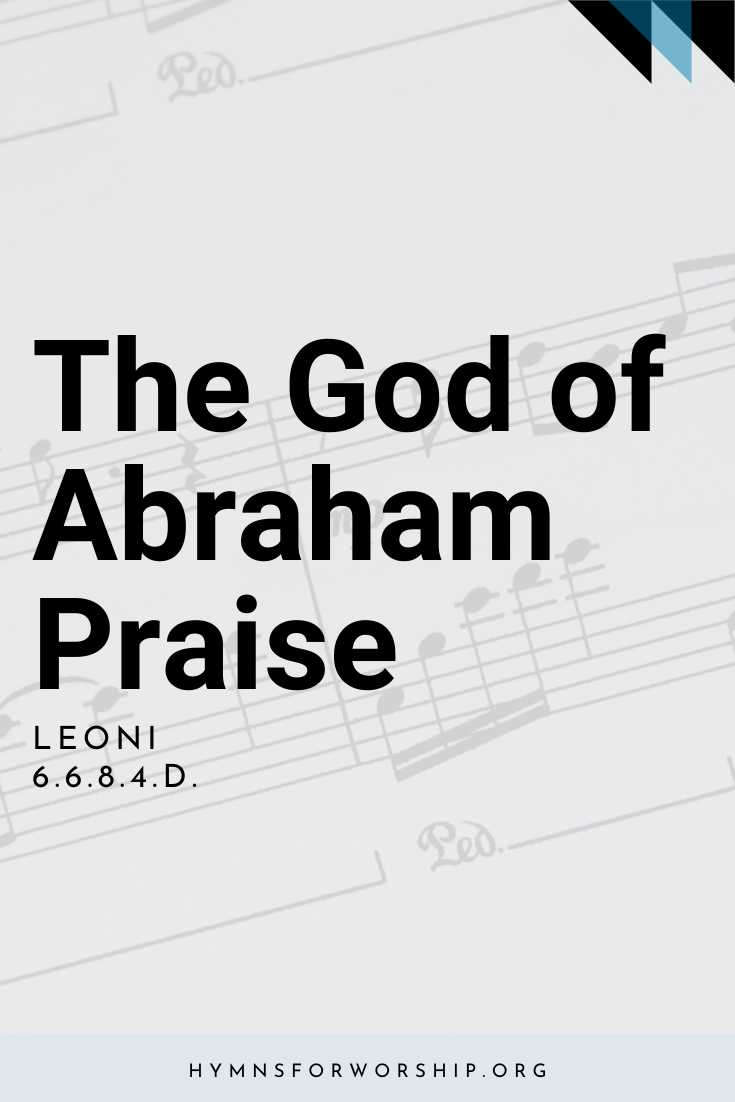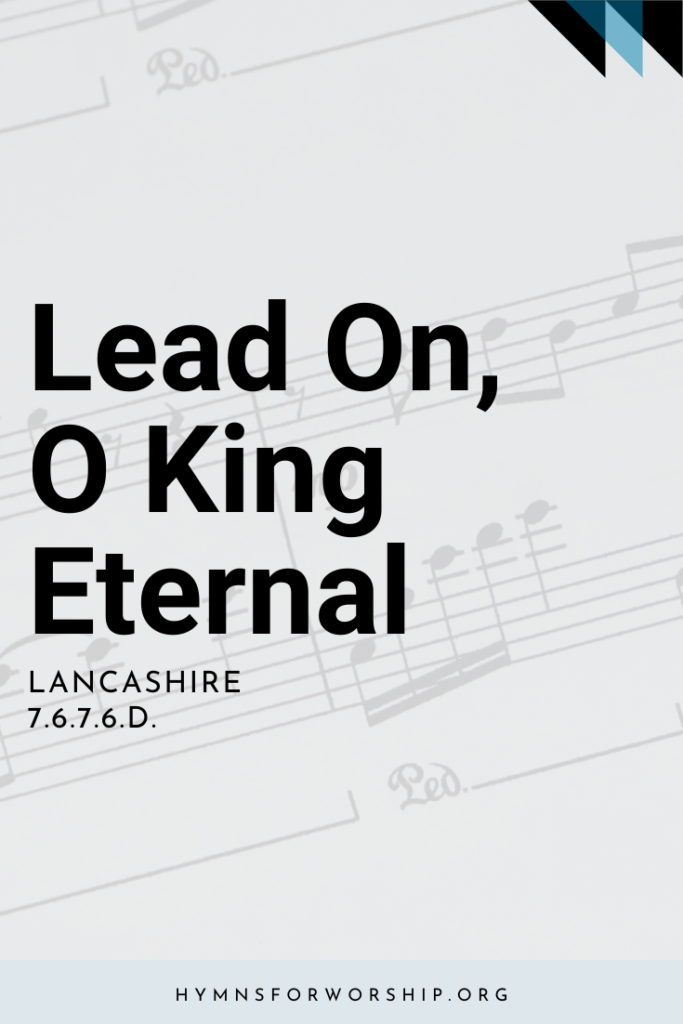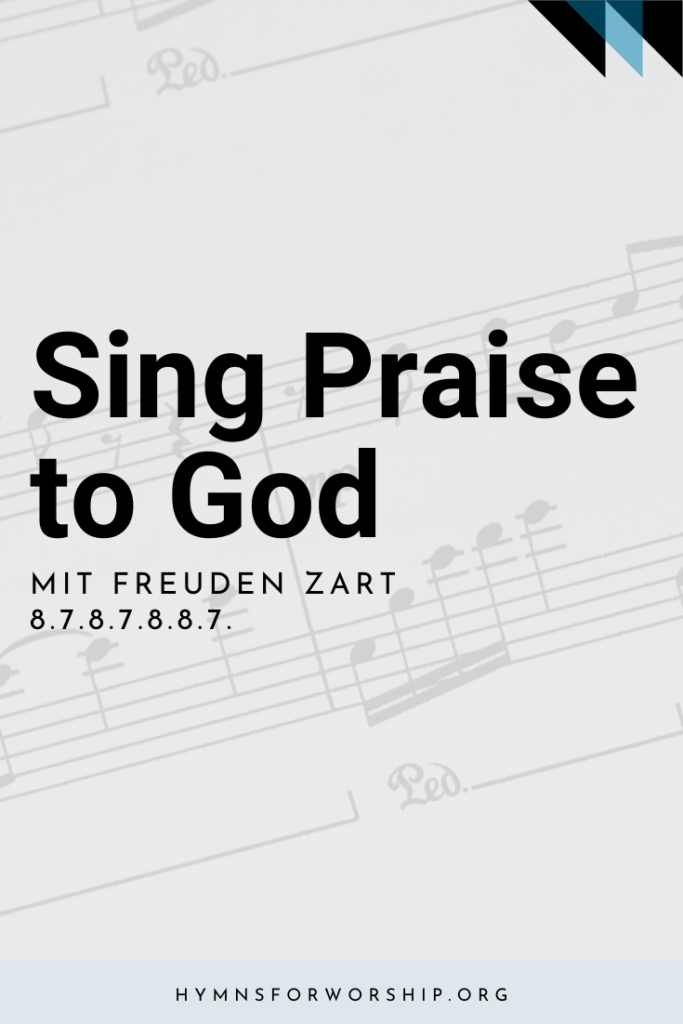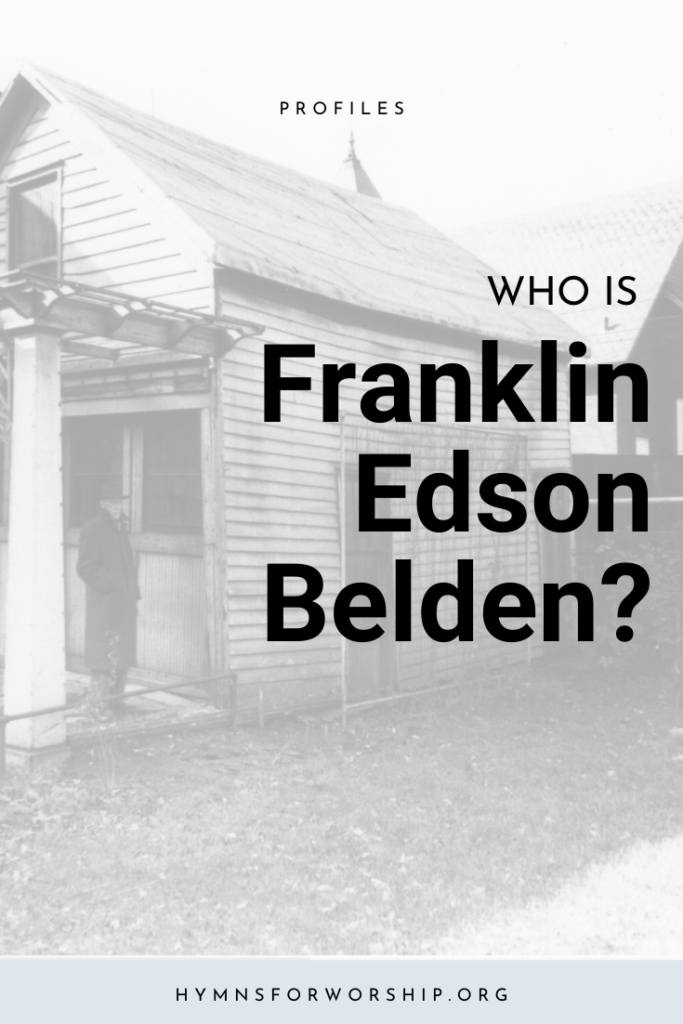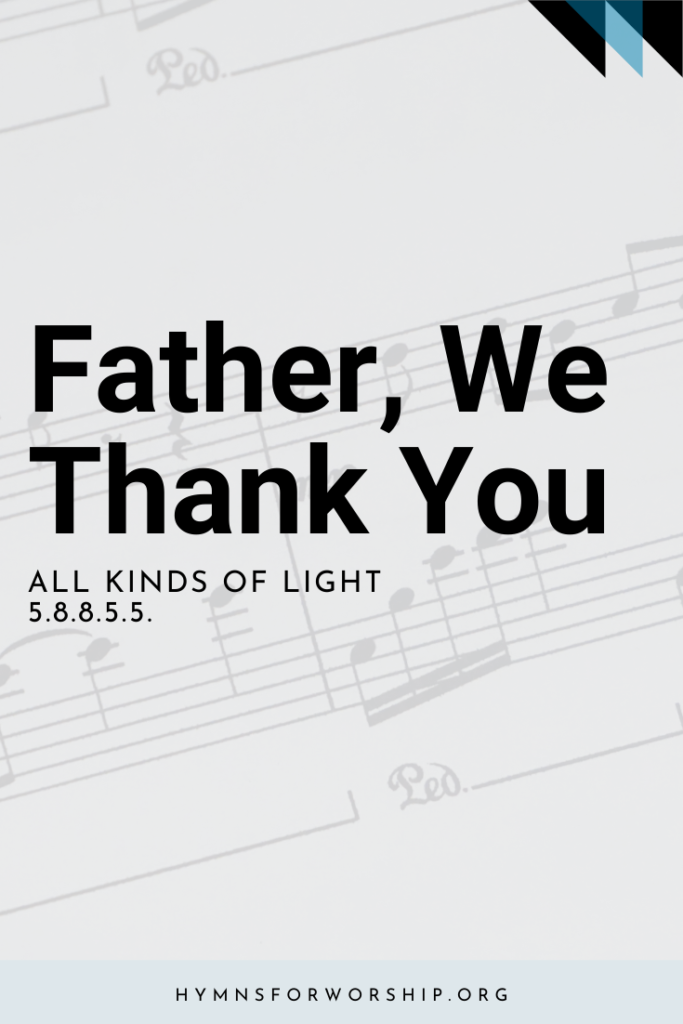WORSHIP >> Adoration & Praise
SDAH 11
The God of Abraham praise,
Who reigns enthroned above;
Ancient of everlasting days,
And God of love;

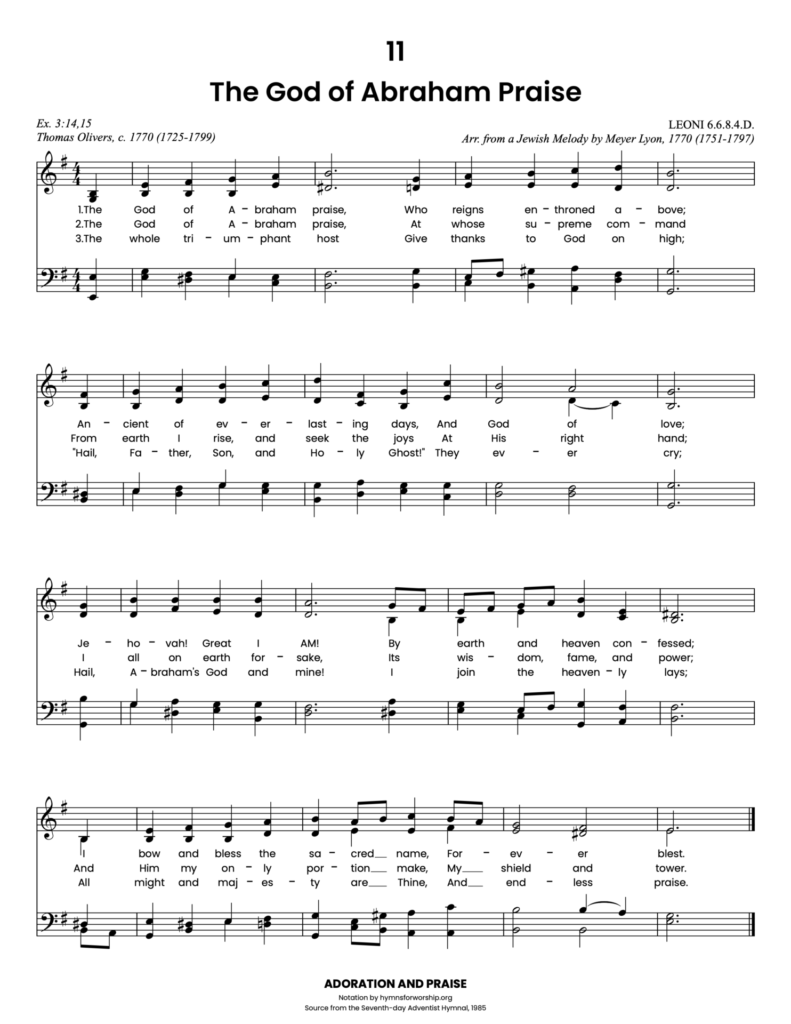
Get the hymn sheet in other keys here
For Worship Leaders
Make each hymn more meaningful with these helpful tools: Short, ready-to-use hymn introductions for church bulletins, multiple ways to introduce a hymn based on your worship theme and in-depth history and insights to enrich your song service.
Hymn Spotlight: The God of Abraham Praise
A hymn rich in heritage and deep in faith, The God of Abraham Praise traces its origins to Yigdal, a metrical version of the Jewish creed formulated by Moses ben Maimonides (1135–1204). This ancient hymn of praise, meaning “Magnify” or “Extol”, has been sung in synagogues for centuries, declaring the greatness of the eternal, living God.
In the 1770s, Methodist preacher Thomas Olivers encountered this powerful hymn in Hebrew and was so moved that he adapted it into English, giving it a distinctly Christian character while preserving the opening and closing themes of the original Jewish text. Nearly every line of his paraphrase echoes Scripture, making it a bold declaration of God’s faithfulness and sovereign rule.
The tune, LEONI, was given to Olivers by Rabbi Myer Lyon (known as Leoni), a singer at London’s Great Synagogue. It is said to resemble melodies of ancient Jewish worship, though its earliest known sources date to the 17th century. The stirring and stately nature of the tune has made it one of the most beloved hymn melodies in both Jewish and Christian traditions.
As we sing today, may we join in the voices of generations before us, proclaiming with joy: “The God of Abraham praise, who reigns enthroned above, Ancient of Everlasting Days, and God of Love!”


Text
1
The God of Abraham praise,
Who reigns enthroned above;
Ancient of everlasting days,
And God of love;
Jehovah! Great I AM!
By earth and heaven confessed;
I bow and bless the sacred name,
Forever blest.
2
The God of Abraham praise,
At whose supreme command
From earth I rise, and seek the joys
At His right hand;
I all on earth forsake,
Its wisdom, fame and power;
And Him my only portion make,
My shield and tower.
3
The whole triumphant host
Give thanks to God on high;
“Hail, Father, Son, and Holy Ghost!”
They ever cry;
Hail, Abraham’s God and mine!
I join the heavenly lays;
All might and majesty are Thine,
And endless praise.

Hymn Info
Biblical Reference
(a) Dan 7:9; 1 John 4:8; Ex 3:14, 15 (b) Ps 16:11, 144:2 (c) Rev 4:8, 5:12
Author
Thomas Olivers (1725-1799)
Year Published
c. 1770
Hymn Tune
LEONI
Metrical Number
6.6.8.4.D.
Composer
Meyer Lyon (1751-1797)
Arranger
Arranged from a Jewish Melody by Meyer Lyon
Year Composed
1770
Theme
ADORATION & PRAISE

